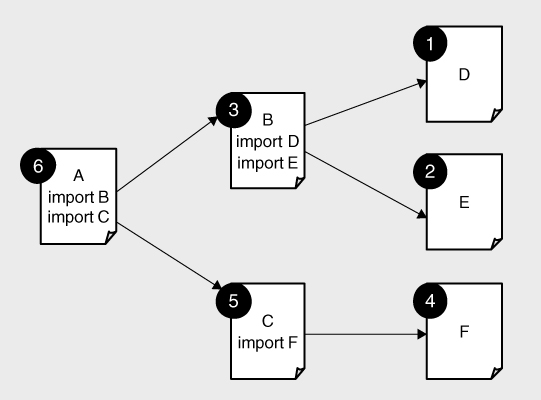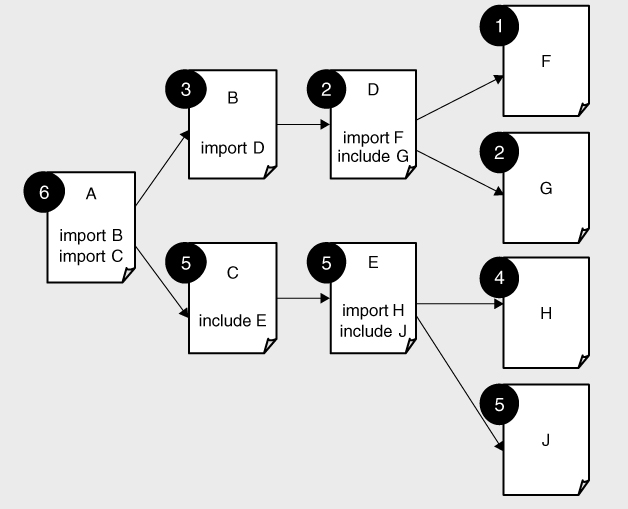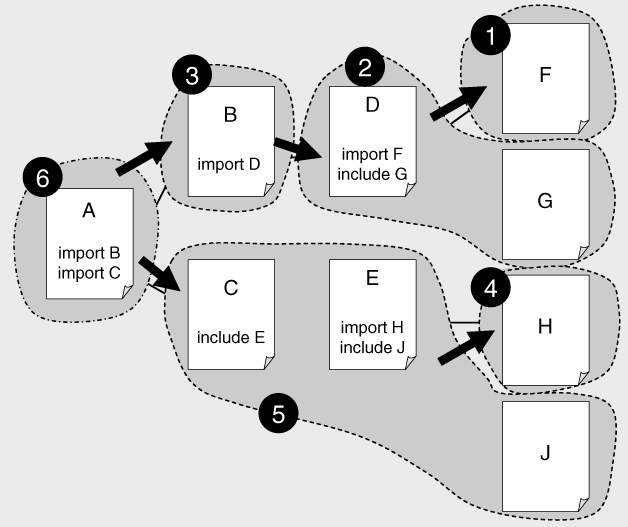XSLT 2.0 and XPath 2.0 Programmer's Reference, 4th Edition (180 page)
Read XSLT 2.0 and XPath 2.0 Programmer's Reference, 4th Edition Online
Authors: Michael Kay

If one stylesheet module incorporates another using
Figure 6-4
).
Here J is included in E, so it has the same import precedence as E, and similarly E has the same import precedence as C.
The import precedence of a stylesheet module applies to all the declarations in that module, so for example the
As
The XSLT 2.0 specification introduces the concept of a
stylesheet layer
, which is a group of stylesheet modules that have the same import precedence because they refer to each other using
declaration order
, which is the order that the declarations (top-level elements) would appear in if included stylesheets were expanded at the point of the
The stylesheet tree for the example above is shown in
Figure 6-5
.
The concepts of stylesheet levels, declaration order, and the stylesheet tree have been used to tighten up the specification of how instructions such as
Effect of Import Precedence
The import precedence of a declaration affects its standing relative to other declarations of the same type, and may be used to resolve conflicts. The effect is as shown in the table below for each kind of declaration.
| Element type | Rules |
| If there are two attribute sets with the same expanded name, they are merged. If there is an attribute that is present in both, then the one from the attribute set with higher import precedence wins. If there are two or more values for an attribute that have the same precedence, and this is the highest precedence, the XSLT processor chooses the one that was specified last (for a more precise definition of what “last” means, see | |
| If there are several | |
| All the | |
| If there are several | |
| No conflicts arise; the import precedence of these elements is immaterial, except in determining the import precedence of the referenced stylesheet module. | |
| If there are several | |
| All the key definitions are used, regardless of their import precedence. See | |
| If several aliases for the same stylesheet prefix are defined, the one with the highest import precedence is used. It is an error if there is no clear winner. | |
| All the cdata-section-elements and use-character-maps attributes, the values from all the | |
| If there is more than one match pattern in QName has higher priority than the form  prefix:* prefix:* , which in turn has higher priority than , which in turn has higher priority than * * . The one with highest priority is then used. . The one with highest priority is then used.It is an error if this leaves more than one match, unless they all give the same answer. | |
| When selecting a template rule for use with mode are taken. Of these, all those with a match pattern that matches the selected node are considered. If this leaves more than one, only those with the highest import precedence are considered. If this still leaves more than one, the one with highest priority is chosen: The rules for deciding the priority are given under In the case of named templates, if there are several name attribute, then the one with highest import precedence wins. It is an error if this leaves no clear winner. | |
| If there are several global |



